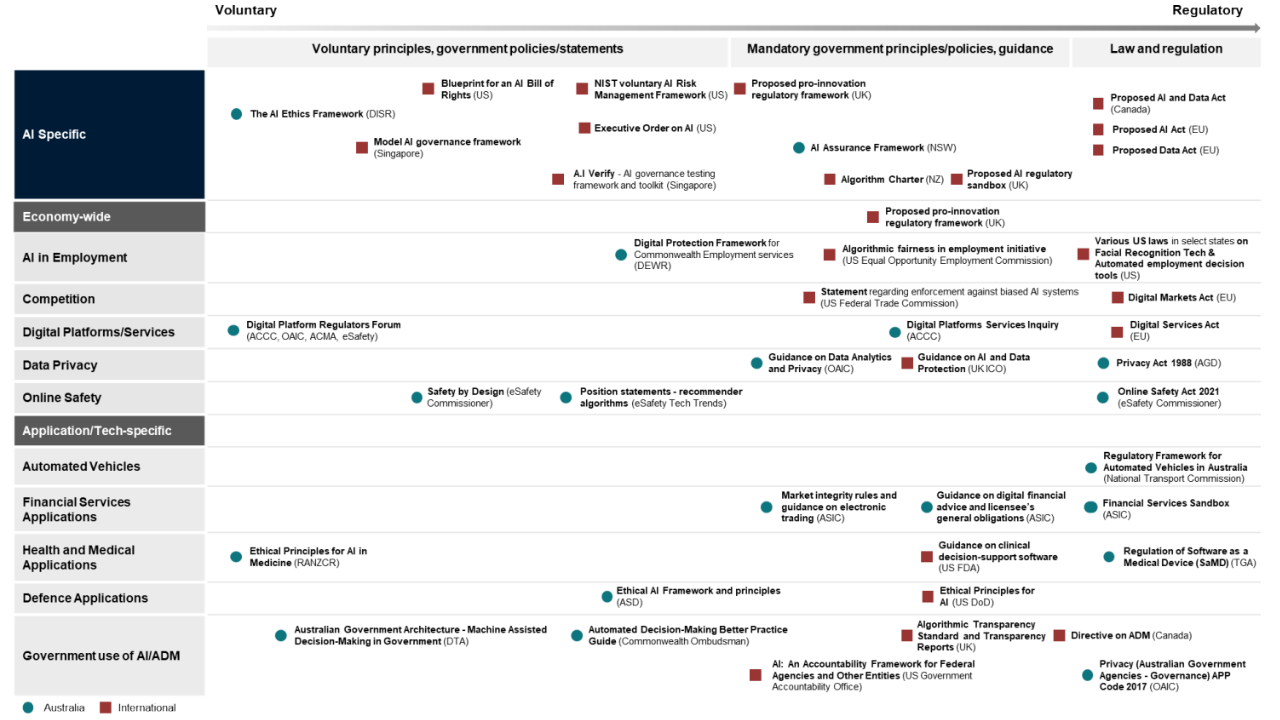The Australian government has released its Safe and Responsible AI in Australia discussion paper, a 42-page report that goes into the challenges, concerns, and potential benefits of the technology.
AI, or artificial intelligence, has been wedged into the tech news cycle more and more over the past year, with Google and Microsoft in a sort-of AI chatbot-development race, while AI art has been discussed in the vein of art theft and deepfakes.
The benefits are easy to grasp, revolving around automation and making our lives easier by replacing some aspects of work, but it’s still an emerging tech and thorough analysis is required.
Ergo, the Safe and Responsible AI in Australia report, commissioned by the Australian government to explore how AI can reasonably fit into our lives. The paper was released alongside another paper: Rapid Response Report: Generative AI. This delved into the specifics of AI and applications in Australian society.
“The upside is massive, whether it’s fighting superbugs with new AI-developed antibiotics or preventing online fraud,” Minister for Industry and Science Ed Husic said.
“But as I have been saying for many years, there needs to be appropriate safeguards to ensure the safe and responsible use of AI.”
Let’s flick through that report.
What challenges does AI pose?
While it’s noted in the paper that AI is being deployed in some fields, such as in remote learning, in optimising engineering designs, and in hospitals to consolidate patient data, and that its development in more fields is anticipated, it doesn’t take long for the challenges of the tech to be brought up. The technology could be used for harmful things, such as to encourage self-harm, to create misinformation or disinformation, or to create deepfakes “to influence democratic processes or cause other deceit”.
Additionally, it’s outlined in the paper that inaccuracies from AI models (the models of data that go into an AI before producing a result) could lead to issues. Unwanted bias is one of the problems: when an AI has been loaded with data that may present a discriminatory result. In situations where an AI presents a biased result, it’s asked that developers consider the appropriateness of deploying an AI, or find alternative data for the AI to use. Another noted problem is ‘hallucinations’, when an AI creates an erroneous response.
Privacy is also noted as a particular challenge for AI. As AI algorithms rely on previously-created data, taking the form of written words or imagery, there are concerns that an individual’s data could be used, and their privacy breached. The speed at which AI can be deployed, and the accountability and transparency of AI systems were also considered challenges that should be addressed.
How is AI currently regulated in Australia?
The report goes into how AI is regulated in the country, citing that while we don’t have laws specifically focused on AI at the moment, the onus falls into several different legal areas. This includes data and privacy law, consumer law, competition law, copyright law, corporations law, online safety, discrimination law, administrative law, criminal law, and common law through torts and contracts.
Across these specific legal focuses, it’s noted in the paper that sector-specific laws may be necessary, especially for therapeutic goods, food, motor vehicles, airline safety, and financial services industries.
Additionally, work is already being done to make up for the emergence of AI in some areas. The Online Safety Act 2021 is discussed on this note, and how the Act has mechanisms for addressing online safety issues surrounding AI, including cyberbullying and image-based abuse. Additionally, the eSafety commissioner has the power to remove child sexual exploitation material and non-consensual images of a person, even if generated with AI. Clearview AI is also mentioned, in that the company had breached Australian privacy law by scraping users’ biometric data from the internet without disclosure (Clearview AI were subsequently forbidden from harvesting biometric data from Australians). The ACMA also has legal powers to combat misinformation and disinformation created by AI, which it had received in January 2023.
Finally, this section mentions that some public organisations and big tech companies operating in Australia that use AI operate in line with Australia’s AI ethics principles. These principles are intended to be guidelines but aren’t legislation.
So what should we do?
Attention is cast to several other countries when discussing what laws could be developed around the technology, and on page 25, a fairly in-depth figure is presented, mapping out domestic and international legislation. Sorry, it’s gonna render terribly on your phone.

In managing the risks AI could pose and the protection that more legal frameworks could offer, it is proposed in the paper that measures adopted by Australia should be guided by the need to:
- Ensure there are appropriate safeguards, especially for high-risk applications of AI and automated decision-making
- Provide greater certainty and make it easier for businesses to confidently invest in AI-enabled innovations and automated decision-making activities and engage in these activities responsibly.
Then below, another figure is displayed, highlighting the strengths and limitations of introducing unregulated guidelines and laws surrounding AI.

A draft for a risk-based approach is also included in the paper. Elements such as impact assessments, human oversight assessments, adequate training requirements, explanations for data results, and robust documentation and monitoring are considered as possible solutions to some of AI’s problems.
As the Australian government considers potential frameworks and protections against AI, it’s welcoming submissions on the topic, focusing on mitigating risks and increasing trust in the technology. We’ll keep you across its progression, but for now, this is where we are.
